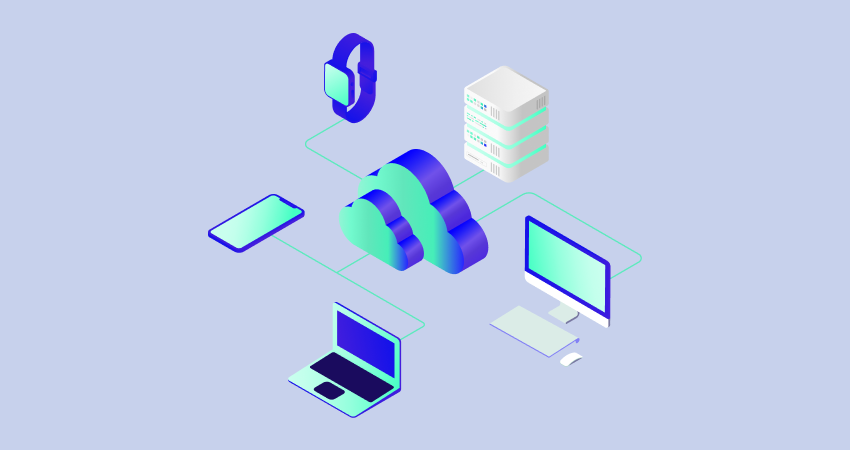How to Build, Manage and Scale Distributed Networks?
Even though you rarely hear the term itself used, distributed networks are incredibly popular in the IT infrastructure of many industries, providing a unified data communication network that manages multiple sources.
Author
Date
Category
All Categories
- AI-powered security
- Attacks & Threats
- Cybersecurity
- Hybrid Cloud
- Network
- Network Firewall
- Network Protection
- News
- Remote Workforce
- Security
- Zero Trust
Contents
Popular Posts
Product
Join the Newsletter

Spreading the data across more than one central computer, distributing processing across the different links. This provides many advantages, especially when digital company resources are distributed in different physical locations. Distributed networks are also amazingly scalable, adding capability as needed as your needs grow.
What exactly are distributed networks and how to build and manage them? Let’s take a look at the basics:
What is a Distributed Network?
When you look at a company’s IT infrastructure, the resources accessible in a distributed network are spread over a number of sub-networks, devices, and other access points. In contrast to centralized networks, in which a single server operates all of the data, distributed networks interconnect many centralized networks, for example, remote offices.
Since there is no single central server, malfunction of one of the networks won’t cause downtime for the rest. Centralized monitoring, however, can be possible to make management easy – in such a scenario, all of the networks create an interconnected web that is a distributed network and can all work independently, yet are all governed by the same set of policies.
Differences Between Centralized and Distributed Networks
Centralized IT architecture provides many bottlenecks for modern companies. New machines are not easy to add when needed, and a fault of the central data center means no access to any of the other servers. There are also rising latency issues as your company grows, as more and more traffic is received by one central server.
In a distributed network, scaling possibilities are potentially infinite. New networks can easily be connected to the system, working together in harmony to create an effective architecture. If one of the networks goes down, others can take over its responsibilities, removing the risk of downtime. Since traffic is spread across all networks, the performance isn’t at risk of overload, since new networks add to the maximum network capability.
Pros and Cons of Distributed Networks
As you can see, the main benefits of distributed networks are their resistance to malfunctions, supreme performance, and infinite scalability. Deployment and adding new components to the system is easy and doesn’t take much time and resources as well. Distributed networks are, however, much more complicated than centralized networks to manage and monitor. Proper software is often required to properly supervise the networks, making sure everything works in order and the network is secure. With a professional vendor, you’ll be able to automate many processes connected with managing distributed networks, like creating documentation or monitoring.
Even though distributed networks are designed with scalability in mind, a centralized monitoring system might not be. As more components join the network, it’s going to get harder and harder to control them all. Cloud-based monitoring solutions for distributed networks can eliminate the need of having separate hardware and software required to run diagnostics and monitor network activity. Such tools can be accessed from a variety of devices, giving you control over the entire network from any location.
With an advanced system governing the network, there is no need for additional architecture changes when adding new devices – deployment takes mere moments and all the devices are automatically kept up to date and rarely require individual maintenance. Additional security measures can also be applied, protecting your data center and all connected networks from backdoor access. Zero Trust architecture, built-in firewall functionalities, and innovative identity and authentication protocols are all implemented to make distributed networks breach-resistant.
Building and Managing Distributed Networks with Cloud Solutions
Using a unified network management system based on cloud computing solutions makes managing a distributed network simple and easy. Most systems provide access to a control panel, with all relevant customization options and information clearly visible. There is no need for additional hardware to keep and maintain at your offices, as everything is accessed through the cloud.
Setting up pre-configured monitoring protocols and turning on early alerts will let you spot anomalies before they can cause damage – and these are only some of the available advanced monitoring tools. Adding new machines to the network immediately provides visual feedback on the platform, creating a single hub designed to control the entirety of the network.
Cloud-based security measures are used to make distributed networks secure from unauthorized access and malicious software, without the need to directly interfere with the device connected to the network. Since these solutions are network-wide and include a wide range of countermeasures, each new device will be protected from cyber threats the moment it is connected.
Don’t let the stress of managing a distributed network eat you up – make the most of cloud solutions that offer incredible scalability and quick integration, easily adaptable on the go to your specific business needs. Growing businesses can take advantage of this, as the extent of functionality can be quickly modified as the requirements increase.
Get Started with Timus
Zero Trust. Adaptive Cloud Firewall. Secure Remote Access. In one.
